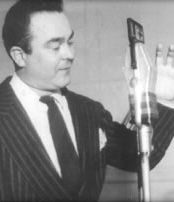Introduction
In this chapter we'll look more closely at the music. We'll translate some of the lyrics into English, discuss the structure of the music, and then in the next chapters, we'll try to tie it all together by showing how today's best dancers use the melodies and cadences created during tango's Golden Age. To aid our discussion, we'll provide some recordings—but keep in mind that we're providing only enough of each tango to help non-Spanish speakers understand the lyrics, and to illustrate points about the history and the rhythms of the music. These are not high-quality recordings, and they aren’t complete versions. If you want to listen to these tangos and dance to the full range of sound and emotion they convey, please purchase commercially available copies.
A Dancer's Guide to the Music
I once asked a friend what it was about tango that grabbed him. I thought he was an unlikely candidate for tango addiction because he’s an African-American from Philadelphia with an Ivy League degree, and a background drenched in jazz and big-city culture… but he got hooked nonetheless. He said, simply, “It’s because the music is so powerful.”
While the language of tango is filled with metaphors and colorful street poetry, its message is usually simple and direct. And for me, that's a big part of its appeal. It lacks the “hipness” of today’s culture. It doesn’t try to hide strong feelings under a layer of irony or cool talk. Tango just hangs out there, and says exactly what it feels. It talks about big, strong emotional themes in a very straightforward way. Look at two of the most popular valses (tango waltzes) in Buenos Aires. One is “Desde el Alma” and the other is “Lagrimas y Sonrisas”—both are beautiful and complex pieces of music, but the versions played for dancing have no lyrics. The only words connected to them are their titles… but then, with titles like “From the Soul”, and “Tears and Smiles”, what more needs to be said? Both are over 90 years old, but people in the milongas dance to them almost every day. They figured out what was important a long time ago, and haven’t seen any reason to corrupt it very much with popular culture (at least not yet). So in this section we’ll look more closely at the music—and also at the ways some of the best dancers connect to it in the milongas. We’ll also try to decode some of the lyrics of the songs… and if we’re lucky, we may even be able to show how the meanings of the lyrics affect the way the milongueros dance.
By the way, this intimate connection between the milongueros and their music isn't easy to see. It took hundreds of milongas, and hundreds more hours of looking at film, for me to become aware of it. Eventually, Alej and I found that after dancing around the milongueros in Buenos Aires every night, we were no longer comfortable in milongas in Europe or the U.S. At first, we couldn’t put our finger on the problem—Alej kept saying that foreign milongas felt “chato” (“flat”).
I finally decided it’s because tango dancers outside of Argentina just aren’t connected to the music. (The milongueros would say they don’t have the music “inside”.) We found that while some of the best foreigners may be dancing to the cadences of tango, they don’t really use the cadences creatively. And more importantly, they tend to do random sequences of patterns and figures. It's as if they're pulling them off the shelf one after another, instead of responding to the music.
The result is that they aren’t really “expressing” the music—at least not in the way of the best Argentines. This poor link between the movement and the music, especially when it’s combined with imprecise technique, makes milongas outside of BsAs feel out of focus. So, ironically, while people outside of Argentina tend to do a lot of big movements and expend a lot of physical energy, their selection of steps has a randomness that tends to cancel out the energy of the milonga. And the result feels chato.



Three stars of the milongas: Alberto Castillo, Alberto Echagüe, and Angel Vargas.
Each has a distinct style… Castillo sings with the snarl of the arrabal, Echagüe
uses the rapid-fire lunfardo slang of a tough guy from the street, and
Vargas sings with a smooth, refined, downtown voice.
I should note that this section may not be for everybody.�It takes time and work to puzzle out the lyrics of a tango�but for a serious dancer who wants to break through the glass ceiling that all foreigners eventually encounter, it is the ultimate step.�So, in the following pages I�ll write about some of the dance tangos that interest me, and we'll see what the lyrics add to them.�It will only be a small sampling of a huge body of music, and I won�t select them in any particular order.�The only criterion for selection will be that they are very popular for dancing. These are tangos you�ll hear all the time when you go out in BsAs.�(Note: If you like these tangos, and you don�t hear them in your local milongas, you might ask your DJ to add them to the play list.)
